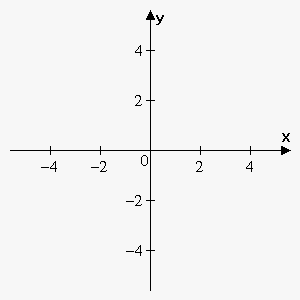Concept of Antiderivative and Indefinite Integral
In the Calculus I (Differential Calculus) section, our main purpose was to find the derivative of a given function.
But often we need to solve the inverse task: given a function $$${f{{\left({x}\right)}}}$$$, we need to find the function $$${F}{\left({x}\right)}$$$ whose derivative is $$${f{{\left({x}\right)}}}$$$. In other words, we need to find a function $$${F}{\left({x}\right)}$$$ such that $$${F}'{\left({x}\right)}={f{{\left({x}\right)}}}$$$.
Indeed, suppose that we are given the velocity of an object $$${v}{\left({t}\right)}$$$ and need to find its position function $$${s}{\left({t}\right)}.$$$ Since $$${s}'{\left({t}\right)}={v}{\left({t}\right)}$$$, this leads us to the inverse task. Similarly, we may want to find the velocity $$${v}{\left({t}\right)}$$$ of an object knowing its acceleration $$${a}{\left({t}\right)}$$$. Since $$${v}'{\left({t}\right)}={a}{\left({t}\right)}$$$, we again need to solve the inverse task.
Definition. A function $$${F}$$$ is called the antiderivative of $$${f{}}$$$ on an interval $$${I}$$$ if $$${F}'{\left({x}\right)}={f{{\left({x}\right)}}}$$$ for all $$${x}$$$ in $$${I}$$$.
Example 1. Find the antiderivative of $$${f{{\left({x}\right)}}}={{x}}^{{2}}$$$.
It is not difficult to discover the antiderivative of $$${{x}}^{{2}}$$$ if you know the derivative of the power function.
In fact, if $$${F}{\left({x}\right)}=\frac{{1}}{{3}}{{x}}^{{3}}$$$, then $$${F}'{\left({x}\right)}={{x}}^{{2}}={f{{\left({x}\right)}}}$$$.
But the function $$${G}{\left({x}\right)}=\frac{{1}}{{3}}{{x}}^{{3}}+{1}$$$ also satisfies $$${G}'{\left({x}\right)}={{x}}^{{2}}={f{{\left({x}\right)}}}$$$.
Therefore, both $$${F}$$$ and $$${G}$$$ are antiderivatives of $$${f{}}$$$.
In general, any function of the form $$$\frac{{1}}{{3}}{{x}}^{{3}}+{C}$$$, where $$${C}$$$ is a constant, is an antiderivative of $$${{x}}^{{2}}$$$.
The following fact says that $$${f{}}$$$ has no other antiderivatives.
Fact. If $$${F}{\left({x}\right)}$$$ is an antiderivative of $$${f{{\left({x}\right)}}}$$$ on $$${I}$$$, then the most general antiderivative of $$${f{}}$$$ on $$${I}$$$ is $$${F}{\left({x}\right)}+{C}$$$, where $$${C}$$$ is an arbitrary constant.
Example 2. Find the general antiderivative of $$${{x}}^{{n}}$$$, $$${n}\ne-{1}$$$.
Since $$${\left(\frac{{{{x}}^{{{n}+{1}}}}}{{{n}+{1}}}\right)}'={{x}}^{{n}}$$$, the general antiderivative of $$${{x}}^{{n}}$$$ is $$$\frac{{{{x}}^{{{n}+{1}}}}}{{{n}+{1}}}+{C}$$$, $$${n}\ne-{1}$$$.
In fact, the antiderivative arises so often that it is given a special name and notation.
Definition. The expression $$${F}{\left({x}\right)}+{C}$$$, where $$${C}$$$ is an arbitrary constant, that is the most general antiderivative of the function $$${f{{\left({x}\right)}}}$$$, is called the indefinite integral of $$${f{{\left({x}\right)}}}$$$ and is denoted by $$$\int{f{{\left({x}\right)}}}{d}{x}$$$.
In other words, $$$\int{f{{\left({x}\right)}}}{d}{x}={F}{\left({x}\right)}+{C}$$$, where $$${C}$$$ is an arbitrary constant.
The sign $$$\int$$$ was introduced by Leibniz and is called the integral sign. $$${f{{\left({x}\right)}}}$$$ is called the integrand.
The process of finding the indefinite integral (or general antiderivative) is called integration.
Also, bear in mind that some functions can't be integrated; in other words, the integral of some functions can't be done in terms of the functions we know. Examples of such functions are $$$\int\frac{{{{e}}^{{x}}}}{{x}}{d}{x}$$$, $$$\int{\cos{{\left({{x}}^{{2}}\right)}}}{d}{x}$$$, etc.
Now, returning to the position, velocity, and acceleration functions, we can write that
- $$${s}{\left({t}\right)}=\int{v}{\left({t}\right)}{d}{t}$$$;
- $$${v}{\left({t}\right)}=\int{a}{\left({t}\right)}{d}{t}$$$.
Example 3. Find $$$\int{\cos{{\left({x}\right)}}}{d}{x}$$$.
Since $$${\left({\sin{{\left({x}\right)}}}\right)}'={\cos{{\left({x}\right)}}}$$$, the antiderivative of $$${\cos{{\left({x}\right)}}}$$$ is $$${\sin{{\left({x}\right)}}}$$$, so the general antiderivative (indefinite integral) is $$$\int{\cos{{\left({x}\right)}}}{d}{x}={\sin{{\left({x}\right)}}}+{C}$$$, where $$${C}$$$ is an arbitrary constant.
Since the indefinite integral (general antiderivative) is given by a family of functions, it is impossible to define some particular function without defining certain additional conditions. To define a particular function, we can add a condition of the form $$${F}{\left({a}\right)}={b}$$$.
Example 4. Find $$$\int{{x}}^{{4}}{d}{x}$$$ if $$${F}{\left({1}\right)}={2}$$$.
Since $$${\left(\frac{{1}}{{5}}{{x}}^{{5}}\right)}'={{x}}^{{4}}$$$, we have that $$$\int{{x}}^{{4}}{d}{x}=\frac{{1}}{{5}}{{x}}^{{5}}+{C}$$$.
That is, $$${F}{\left({x}\right)}=\frac{{1}}{{5}}{{x}}^{{5}}+{C}$$$. To define the particular function (i.e. the constant $$${C}$$$), we use the condition $$${F}{\left({1}\right)}={2}$$$:
$$${2}={F}{\left({1}\right)}=\frac{{1}}{{5}}\cdot{{1}}^{{5}}+{C}$$$. From this, $$${C}=\frac{{9}}{{5}}$$$.
So, $$${F}{\left({x}\right)}=\frac{{1}}{{5}}{{x}}^{{5}}+\frac{{9}}{{5}}$$$.
Now, let's study the geometric meaning of the indefinite integral.
Since the derivative is the slope of the tangent line at a point $$${a}$$$, the indefinite integral is a function $$${F}{\left({x}\right)}$$$ the tangent line to which at the point $$${a}$$$ equals $$${f{{\left({a}\right)}}}$$$.
Example 5. We are given that $$${f{{\left({x}\right)}}}=\sqrt{{{1}+{{x}}^{{2}}}}$$$. Use it to sketch the graph of the indefinite integral $$${F}{\left({x}\right)}.$$$
 Recall that the slope of the tangent line to the indefinite integral at a point $$${a}$$$ is $$${f{{\left({a}\right)}}}$$$.
Recall that the slope of the tangent line to the indefinite integral at a point $$${a}$$$ is $$${f{{\left({a}\right)}}}$$$.
So, we calculate that $$${f{{\left({0}\right)}}}=\sqrt{{{1}+{{0}}^{{2}}}}={1}$$$, $$${f{{\left({2}\right)}}}=\sqrt{{{1}+{{2}}^{{2}}}}=\sqrt{{{5}}}\approx{2.24}$$$, etc.
This means that the slope of the tangent line at the point $$$0$$$ will be $$$1$$$, the slope of the tangent line at the point $$$2$$$ will be approximately $$$2.24$$$. Now, we draw several tangent segments with the slope $$$1$$$ at the point $$$x=0$$$ and several tangent segments with the slope $$$2.24$$$ at $$${x}={2}$$$. Continuing this process, we obtain the slopes of the tangents at all the points. This is called a direction field because it shows the direction of $$${F}{\left({x}\right)}$$$ at all the points.
Now, we can draw several curves that follow the direction of the tangent segments. If we want a particular curve, then we need an additional condition. For example, only the green curve satisfies the condition $$${F}{\left({0}\right)}={2}$$$.
Note that all curves can be obtained from each other by shifting upward or downward.
